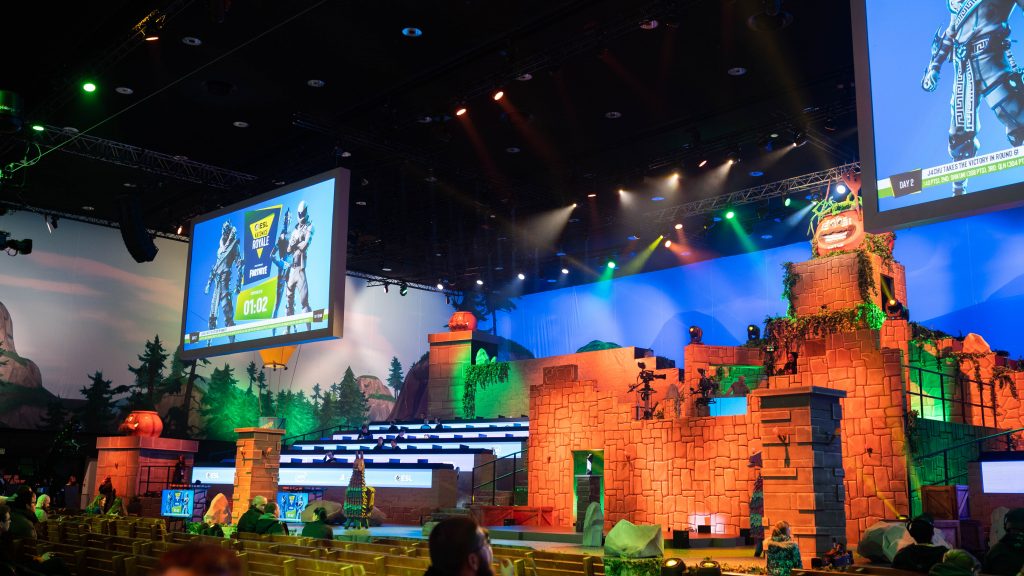Esports, the new sponsorship El Dorado?
In November 2019, Paris played host to the World Championship Final of the popular online game, League of Legends. The event was broadcast in 16 languages on around 20 platforms and attracted no less than 44 million spectators. Among young people, the popularity of these esport tournaments easily rivals that of the Olympic Games – or even almighty football. And despite the pandemic, the popularity of these video game competitions continues to grow. For businesses, even those outside the industry, this offers a unique opportunity to review their stance on sponsorships.
Still too often considered as an emerging phenomenon, or even a niche, esport (i.e. competitive video games) represents a considerable market. It now outstrips many traditional sports, both in terms of the number of spectators (500 million in 2020, a 10% increase compared to the previous year) and in terms of revenue (almost one billion dollars in 2020, +15% compared to 2019).
In Belgium, the number of esport fans is estimated at more than one million – that’s more than 11% of the country’s total population over sixteen. And worldwide, more than two billion people are now aware of what the discipline consists of – a notoriety that continues to grow.

A young but diverse public
According to a recent study by McKinsey, esport fans are mainly young men (average age 26), tech-savvy, and with a higher education background. However, the reality is a little more complex, as there are sometimes huge disparities from one game to another. The spectators who enjoy watching skirmishes in Counter Strike: Global Offensive are a different crowd to those who love to watch Overwatch or StarCraft II games.
It’s therefore essential for a brand wishing to enter the esports sector to know these different audiences well, and to target the most appropriate one for its specific brand goals. Similarly, when analysing the essential metrics, it’s very important to study them in the context of the targeted segment, as a big audience success can mask a failure on the desired target. This diversity of audiences between different games requires a detailed knowledge of the esport market and the leading titles of the moment.
A volatile market
The other difficulty lies in the ever-changing nature of the esport market. The games on the bill are constantly changing, with new games appearing on a regular basis, and sometimes experiencing resounding success in just a few days. We are of course thinking of the Fortnite phenomenon, but also of games such as Apex Legends or Valorant, which are already very popular.

It’s also true when you think about the streamers who relay these esport events. Some of them have experienced short-lived popularity, while others have become key players in the industry. Some, like Richard Tyler Blevins aka Ninja, has become a multimillionaire.
Professional esport teams also experience this volatility, as their configurations change regularly, according to the tournaments. A major difference with traditional sports is that fans are more likely to be loyal to players, not teams. An important distinction in the case of a sponsorship project, this particular attachment of the public to the individual rather than to the collective requires an in-depth knowledge of the esport environment, so you can quickly identify shifts in trends and adapt accordingly.
Many options…
So why invest in esports today? Firstly, because the audience you’ll reach is usually rather resistant to advertising, esports is a channel where they’ll be more receptive to what your brand is offering. Moreover, fans of the discipline are particularly active on social media, so if you win them over, you’ll uncover powerful levers to boost your brand. Finally, it’s also an audience with a certain purchasing power, and therefore represents potential customers.
Esports sponsorship can take several forms: it can be associated with a specific event (or organise its own tournament), advertising in dedicated media (online, but also traditional), through partnerships with game publishers and streamers, or simply funding a team. It can also take the form of in-game integrations, to display the brand during a particular event (the first point scored for example).
…and limited risks
If esport is still sometimes badly perceived, or neglected, particularly in the general media, this is often due to a lack of understanding (and perhaps a reluctance) to see video games interfere in the world of sports. Yet, like chess, esport has a perfect place in the pantheon of sports disciplines. In fact, esport sponsorship is associated with a rather positive assessment of a brand’s image, even when it comes to violent games. The practice attracts a growing, increasingly passionate and vocal audience, at least as fired up as those following traditional sports.
When you take the notable differences between sports and esports into account, particularly the average age of the audience (41 in traditional sports compared to 26 in esports), the fickleness of the games, the diversity of the public, and the attachment to players rather than to a team, the risks of an esports sponsorship are still rather minimal and easy to solve.
The main difficulty lies in having a commercial approach tinged with authenticity. If the product or its presentation is not perceived as credible and suitable to the esport environment, your brand promo can be totally counterproductive. It is therefore essential to know who you are talking to and what codes to respect so that the message gets across smoothly.
Interested in entering the world of esports sponsorship? Want to see how your brand could fit this unique audience, or define a strategy to approach this ever-growing universe? Our experts are ready and waiting for your call! Get in touch with us.
Our recent blog posts
See all blogs-
How is AI’s synthetic data enhancing User Experience Research? Technology

-
Web3.AI Rising : How new technology can add value to your business

-
How generative AI helped us create an e-commerce app – with personalised content – in just 2 weeks Technology

-
Can you build a foodie app in 3 days using Generative AI? (Spoiler alert: yes!)

